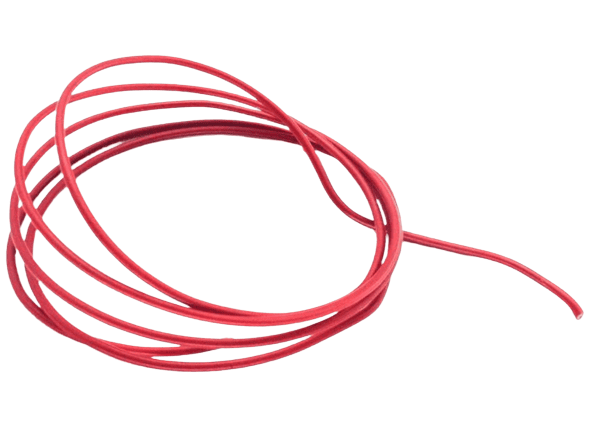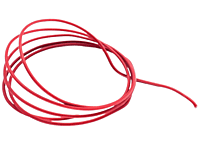


Single Stand Wire (Pack of 2 meters)
Single Strand Wire refers to a type of wire that consists of a single, solid conductor without any additional strands or braiding. Unlike multistrand wires, which are made up of multiple smaller strands twisted or braided together, a single strand wire is composed of a single, uninterrupted piece of conductive material.
Non-returnable
SKU - R0574
Rs.11.00
In stock:
473
Choose Quantity:
Share:
Product Details
Here are some key points about single strand wire:
Solid Conductor: Single strand wires have a single, continuous core conductor. This core is typically made of materials such as copper or aluminum and provides the path for electrical current to flow.
Rigidity: Compared to multistrand wires, single strand wires are generally less flexible and more rigid due to their solid construction. They are better suited for applications where the wire will not undergo frequent bending or movement.
Gauge (AWG): Single strand wires come in various sizes or gauges, which are denoted by their American Wire Gauge (AWG) rating. The gauge determines the diameter of the wire, and thicker gauges have lower numbers. Thicker wires can carry more current, while thinner wires are used for lower current applications.
Applications: Single strand wires are commonly used in applications where flexibility is not a primary concern and where the wire is secured in place. Some common applications include permanent installations in electrical panels, wiring within walls for residential and commercial buildings, and fixed connections in industrial settings.
Solid vs. Stranded Wire: The choice between solid and stranded wire depends on the specific requirements of the application. Solid wire is often used for permanent, stationary installations, while stranded wire is preferred for applications involving movement, bending, or flexibility.
Wire Insulation: Like multistrand wires, single strand wires are also available with various types of insulation, such as PVC (polyvinyl chloride) or other insulating materials, to protect the conductor and prevent electrical contact.
Color Coding: Single strand wires can also be color-coded to indicate different functions or polarities. For example, red might be used for positive connections, black for negative connections, and other colors for specific purposes.


